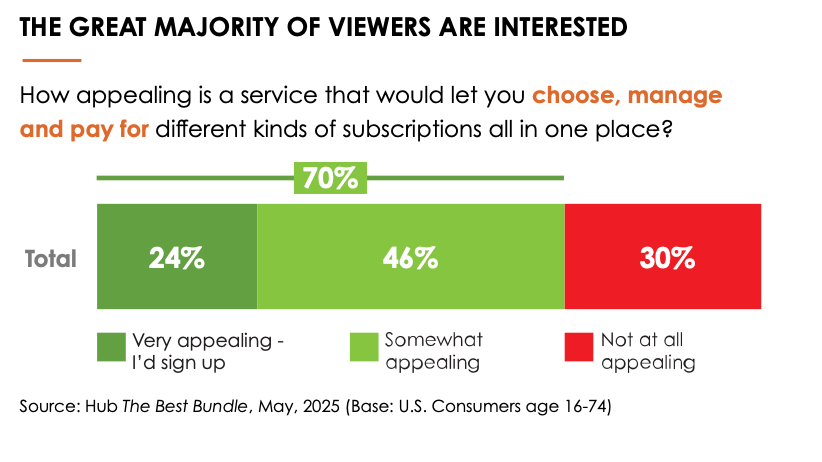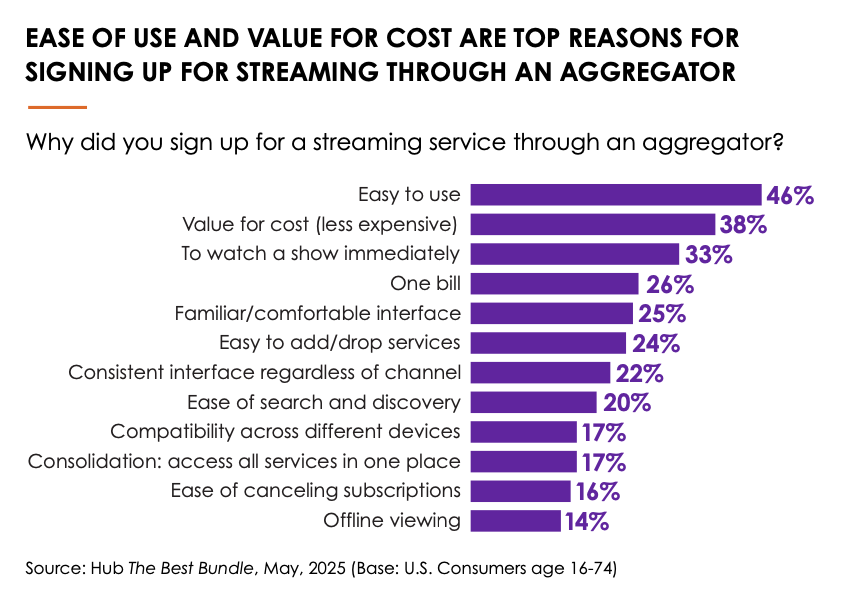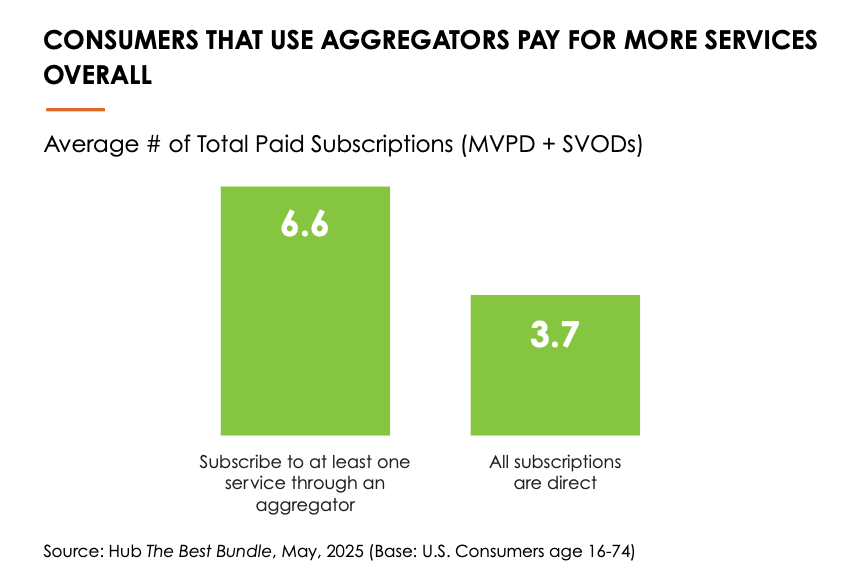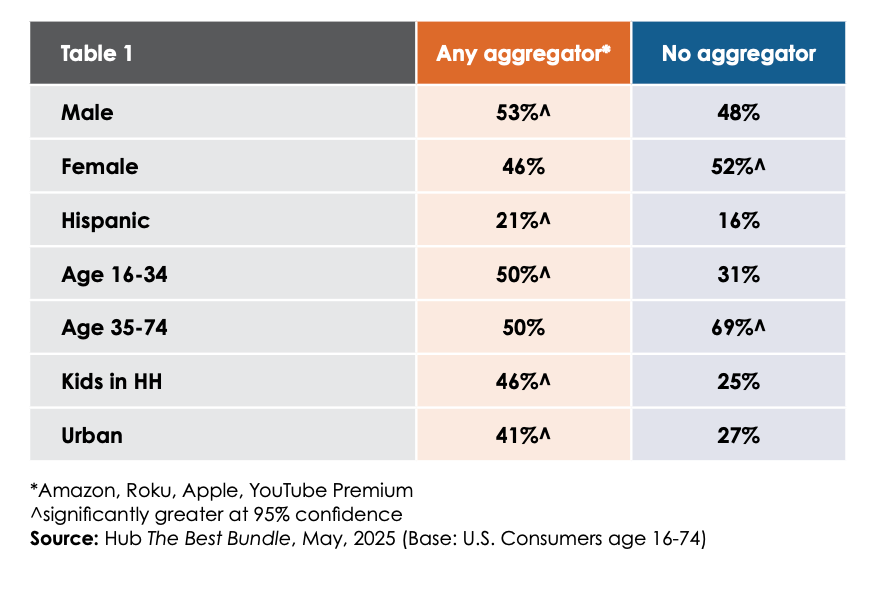Aggregator-in-Chief
Meet the super-streamers managing nine sources, six devices, and a toddler—without breaking a sweat.
Hub Intel: Deep Dive reports are released monthly, delivering exclusive insights and in-depth analysis on key industry topics—available exclusively to paid subscribers. Paid subscribers also get access to a full premium report for download. Not a paid subscriber yet? Now’s the perfect time to upgrade! For just $5/month or $60/year, you'll receive expert-driven reports packed with exclusive data—plus full permission to cite, republish, and use the insights in your work.
Hub Intel Deep Dive: Aggregator-in-Chief
There’s little doubt that most viewers think TV is better than ever. BUT—finding the series and movies they want to watch is still a frustrating experience. Content discovery remains a major pain point and, in many cases, a barrier to adding or keeping streaming subscriptions.
The good news: viewers are open to solutions that make navigating the TV ecosystem easier. In fact, nearly three-quarters say they’d value a service that allows them to manage and pay for all their streaming platforms in one place.
And according to Hub’s latest Best Bundle study, nearly half (46%) are already using a service that aggregates multiple subscriptions.
Why are viewers turning to aggregators?
It’s not just about price—though lower-cost bundles help. The primary driver is simplicity. Whether it's Amazon Prime Video, Roku, YouTube Premium, or Apple, aggregators make it easier to find, subscribe, manage, and cancel. That’s the appeal.
And those who use aggregators? They’re the viewers who truly need a streamlined experience—because they’re also the ones consuming the most content across the most platforms.
Aggregator users are all-in on TV
Six in ten of them say TV is “essential” or “very important” in their lives (compared to 46% of non-aggregator users). On average, they use 9.2 TV sources—four more than those who don’t use an aggregator. That includes nearly seven paid subscriptions, three more than non-aggregators.
The takeaway: viewers who use an aggregator are high-value consumers. They’re deeply engaged, and they’re critical to the entire video ecosystem.
But what else sets them apart?
1. They skew young, urban—and busy.
Across all Hub studies, people who love TV and subscribe to more services have a pretty clearly defined profile. And the viewers who use aggregators fit many of the same characteristics. Aggregator users tend to be younger, more urban, and more likely to have kids at home. They also skew slightly male and Hispanic.
Unlike many heavy TV users, though, they don’t necessarily have higher household incomes. These are not big spenders—they’re savvy navigators.
Table 1 displays demographic differences between viewers who use a streaming aggregator compared to viewers who do not use a streaming aggregator.
Keep reading with a 7-day free trial
Subscribe to Hub Intel: Entertainment Explained to keep reading this post and get 7 days of free access to the full post archives.








